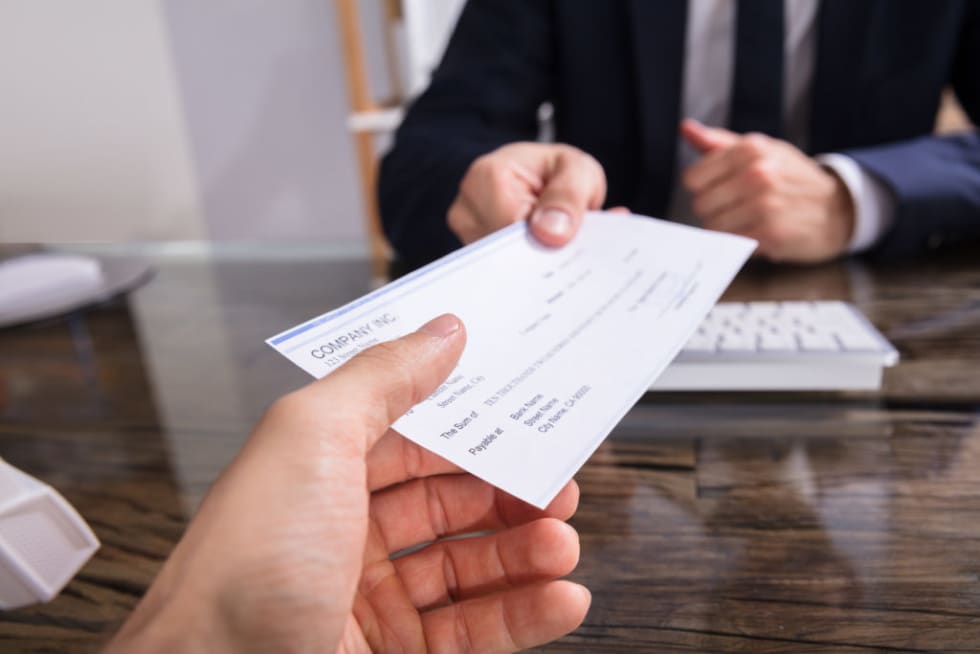Rent Collecting: The Best Ways to Collect Rents from Tenants

Receiving rent when it’s due is arguably the most important factor when managing a property. Luckily, there are many ways to make the rent payment process seamless and effortless for your apartment community. Here’s what property managers and landlords need to know about the best ways to collect rent from tenants.
- Factors to Consider When Choosing a Rent Collection Method
- Traditional Payment Methods
- Electronic Payment Methods
- Is It Better to Pick One Payment Method or Accept a Variety of Formats?
- Communicate Methods & Establish a Rent Due Date
Factors to Consider When Choosing a Rent Collection Method
The best tools for property and tenant management depends on a few variables. When you’re considering various rent collection methods, consider these factors first:
The Number of Tenants/Rental Units — Are you managing just one or a couple of properties? Or are you operating a sizable business that collects rent from a larger amount of tenants?
Your Distance from the Rental Properties — Is it a considerable commute to swing by the properties you are managing? Or is it a stone’s throw away from where you generally spend time?
Your Desire to Interact with Your Tenants — Whether or not you enjoy establishing and maintaining a personal connection with your tenants should weigh into the decision. If you’re a person who prefers to keep tenant interactions to a minimum, this is important to acknowledge.
Are You Tech-Savvy? — If you already understand the in’s and out’s of online payment methods, incorporating an electronic service won’t be difficult. Not a big fan of technology? There are some excellent alternatives to the digital world.
Keep in mind that regardless of the payment method you end up choosing, you’re still responsible for keeping proper records. You’re also responsible for reporting all rent-related income for tax purposes.
Traditional Payment Methods
Traditional rent payment methods have a major disadvantage compared to digital payment methods. In addition to being less convenient, they’re tougher to document. This can make rent payment disputes a difficult ordeal.
That’s why it’s important to ensure that you maintain a detailed record of all rent payments. Of course, this is the case regardless of the form of payment you happen to take.
Here’s what landlords and property managers need to know about traditional rent payment methods.
1. Checks
As a property manager, there are several forms of checks you can accept.. Some offer more security than others.
Accepting checks requires some forethought. Will you accept checks via mail? Or do you want your tenants to bring their checks to a specific drop-off box? You can also set up time in-person for them to deliver their checks to you.
Certified checks are bank-issued. It verifies that the tenant has the full amount of the check in their account. However, those funds are not necessarily still in the account once you decide to deposit the check. That said, this type of check is more reliable than a personal check.
Cashier’s Checks — Cashier’s checks eliminate the worry of a check not clearing when you try to deposit it. These kinds of checks come with the bank’s assurance of available funds as they’ll withdraw the funds from the tenant’s bank account once issued.
Personal checks come directly from your tenant(s) bank account and should be avoided if possible. That’s because these types of checks can’t verify whether the check is 1) real, and 2) if the funds are even available. You won’t know for certain until you deposit the check. If it doesn’t clear, the funds aren’t there. Don’t accept personal checks until a level of trust has been built with a tenant.
2. Cash
Accepting rent in cash is the most straightforward method. However, it’s not recommended. Cash payments are difficult to document. Therefore, they’re easy to dispute.
If you do prefer the cash method, you’ll have to set up a method of acceptance, just as you would for checks. Determine whether you want to set up the exchange in person, via mail, or through the use of a drop-off box.
3. Money Order
People can request money orders at the local post office, the bank, or at other convenience stores for a small fee. When a tenant, for example, requests a money order of $800 to pay for rent, they will give the cashier $800 in return for an $800 money order.
Then, the tenant will then give to you. This gives you the documentation and security you need.
Electronic Payment Methods
There’s an abundance of online portals and mobile payment methods specifically for landlords and property managers. Here are some electronic payment options for tenants that you should consider implementing.
1. ACH Electronic Transfer
Setting up ACH payments is simple and hassle-free. It requires a one-time set-up for your tenants. They need to authorize bank account information and may opt-in to automatic recurring payments.
Keep in mind that there’s typically a 3-day delay before payment is received after it has been initiated. Due to the convenience of ACH payments, they come highly recommended as a safe, efficient alternative to paper checks.
2. Venmo
This popular user-friendly and social-media incorporated system makes paying rent effortless for tenants. However, keep in mind that it may not be ideal for you.
Venmo charges 3% in transaction fees for businesses. So, if you don’t like large transaction costs, this may not be the best option.
3. Zelle
Zelle is an excellent mobile option that is integrated with most major banks. Transfers with Zelle are free. They only require a cell phone number or email address.
Zelle transactions are also instant and deposits money straight into your bank account. Tenants can even also set up recurring payments with Zelle. One drawback for tenants is if Zelle isn't supported by your bank, you can't set up recurring payments.
4. Apple Pay
Apple is another competitor in the mobile payment sphere. US customers need only a debit card. That allows tenants to pay rent from within the Messages app.
The only information your tenant needs is your phone number. There’s no need to worry about hidden fees.
But keep in mind, both you and your tenants need to be Apple customers. It’s unlikely all of your tenants will have iPhones, so make sure to offer other payment alternatives.
5. PayPal
This e-middleman has been around for years. It’s a pioneer in the online payment arena, and pretty much everyone has a PayPal account.
There are a few cons associated with using PayPal for rent collection. First, if there are any disputes, you are leaving your fate up to PayPal reps. Secondly, you'd want to set up a business account, which will incur fees. They'll charge 2.9% + $0.30 for each rent payment.
6. Square
Square is a versatile payment option. It allows you to integrate its services on your own website. It also offers phone, tablet, and computer payment accessibility. And they have their own app for payments, the Square Cash App.
Money that is sent to your bank account will be deposited within 1-3 business days. However, you can opt for instant deposits for a fee.
7. Online Rent Collection Services
Additionally, there are other online tools out there that specialize in rent collection. Some will even include things like automatic late fees and rent payments, background checks, and manage work orders. Some of the more popular choices among landlords are Rentec Direct, Rent Track, and Rent Merchant.
If you want to automate the process as much as possible, an online rent collection tool is probably your best bet. Many of the payment options above have various drawbacks. Paying for a tool that's specifically optimized for rent collection might save you from potential headaches.
On the other hand, allowing different forms of electronic payments could be a big selling point for current and prospective tenants (especially the millennials).
Pick One Payment Method or Accept a Variety of Formats?
Accepting only a single payment method might be frustrating for some tenants. Therefore, one offline and one online method might work well for you and your residents.
Whichever combination of payment methods you settle on, the most important thing is to stay organized and keep proper records.
Communicate Methods & Establish a Rent Due Date
At the end of the day, you must have to communicate clearly to your tenants how they can pay rent. You must establish a firm due date, typically the first day of the month.
No matter what method you choose to collect rent, it’s essential to ensure that the process is as convenient and well-documented as possible for both you and your tenants. That way, you can avoid headaches and make the process as efficient as possible. Happy collecting!
Share this Article





